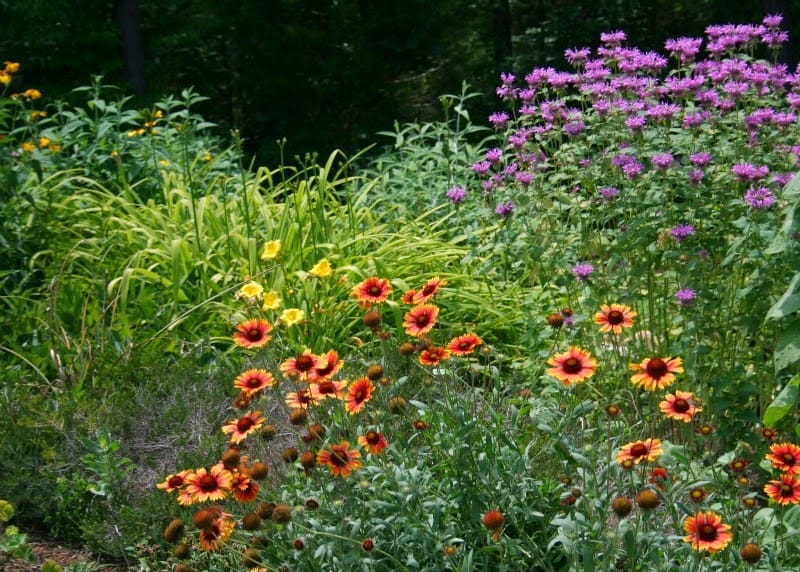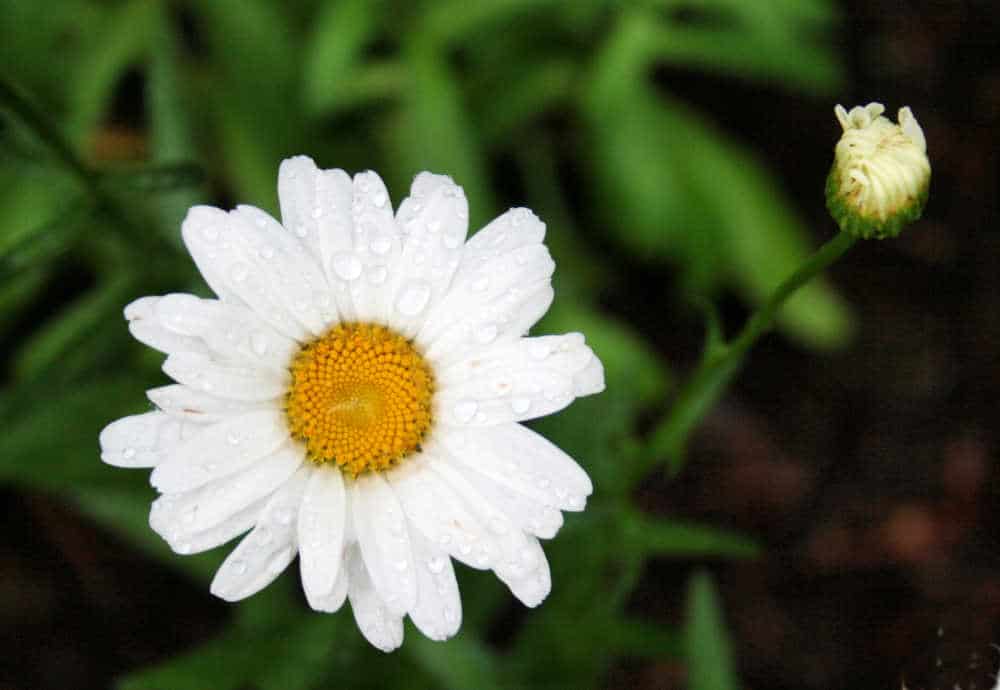Should you buy perennial kits or buy the plants yourself? I started with perennial kits and it’s worth it if you are a beginner.
Perennial Kits – Planting by the Numbers
I’ve never gardened much with perennials before moving to Virginia. Frankly, we didn’t have enough room in my last two gardens. My parents’ house in Floral Park, Long Island, had a garden the size of a postage stamp, mostly filled with my dad’s chrysanthemums and vegetables. My in-laws garden in Huntington, Long Island, where I lived after I married, had clay soil, dense shade, and lots of lawn. Gee, why wouldn’t they dig it up to put in more flower beds? Guess not, huh? I had to make do with what I had. Every bit of sun in that garden bed had a vegetable tucked in.
The only perennials I’d bought before moving to Virginia were 1) daylilies 2) platycodon (Balloon Flower – Komanchi) and 3) heuchera (Coral Bells).
Perennial Plant Kits
When we moved, we had this awful bit of land on the side of the driveway. It sloped away very steeply and was bare dirt. The dirt was hard packed clay with lots of rocks thanks to the digging that had to be done to create our water well. The slope faced south, with the thick pine woods at its back.
What to do?
Plant Perennials
Plant perennials. Lots of them.
That slope needed to be covered. The dirt eroded at a surprisingly fast and scary rate. So we rushed out and bought two perennial sun garden kits from Spring Hill Nurseries. Last March, I laid out the paths and got my long-held wish: a rose garden.
The perennial kits are great. We had good luck with most of them, except the hollyhocks. The hollyhocks either didn’t grow or the Japanese beetles ate them faster than they could grow.
But the other plants…well, read on.

My First Perennial Kit
The kit contained purple yarrow, purple and blue scabiosa (which always sounds like a Harry Pottery spell to me), orange gaillardia, and white and yellow daisies, along with purple mini hollyhocks and big hollyhocks. We originally bought two kits. I called Spring Hill to ask for replacement hollyhocks since so many didn’t grow. They sent me two more full kits at no charge! So I now have four sets of plants growing on the slope.
Perennial Kits – Plants for Virginia
Here’s what thrived in southern Virginia:
1. Yarrow: I love this plant. It loves my hot, sunny slope. It has spread out in pools of green fronds and it is only its second year. I can’t wait to see how it blooms!
2. Gaillardia: Not only did the plants thrive last year, with almost constant hot orange blossoms of gaillardia from June through November, but it reseeded. I saved seeds and have a flat of seedlings waiting to go into another garden. My plants decided to seed themselves and I’m excited to see about a dozen tiny gaillardia springing up among the other perennials. They already have flower buds.
3. Scabiosa: Not everyone’s cup of tea, but the butterflies love the tiny pompom flowers. I think this one also reseeded. It loves the garden and seems very hardy.
4. Daisies: I wish I could find the original packing slip so I can stop calling them both daisies, since I know one is probably rudbeckia, and I feel dumb for not using the Latin names. No matter. Thriving, thick clumps of plants already came back, and I’m excited to see seedlings for these guys too. I’ve also got some plants started from seeds I collected last year.
There you have it – what worked and what didn’t. What didn’t are hollyhocks. The picture today is the one lone hollyhock that bloomed last year. It’s a mini. Everyone asked me if it is a weed and my husband kept asking me if he could dig out the weed, pointing to the poor hollyhock. Sad, sad plant. We’ll see what it does this year!






I wonder why your Hollyhocks didn’t make it?
Is your soil acidic?
All those replacement kits following your complaint:) that’s good customer service.
Rob
Nice to hear from you Rob. I’m enjoying your pictures from France on your blog.
I have a feeling I planted the hollyhock tubers too deep. The ones I sowed from seeds are up again this year, hopefully to flower.
But that mini is…odd.
If framed that picture and put it in my office. Which probably tells you a lot about me and my particular brand of oddness.
Keep coming back and visiting –
Jeanne
Hollyhocks are a biannual love! They only come up two years and die off. generally they work the same as digitalis, not blooming the first year and then its the second year you get blooms, they drop seeds, rinse and repeat. It’s nothing you’re doing, its just the nature of the beast! 😀
I’m not good at transplanting. So I resort to buying seeds – I buy a lot of my seeds by bulk from http://www.wildseedfarms.com They are great! I plan on planting a lot of seeds this year because I do a lot of floral still life photography. Come by and “smell my still life of blue morning glories” at http://photographyhints.blogspot.com